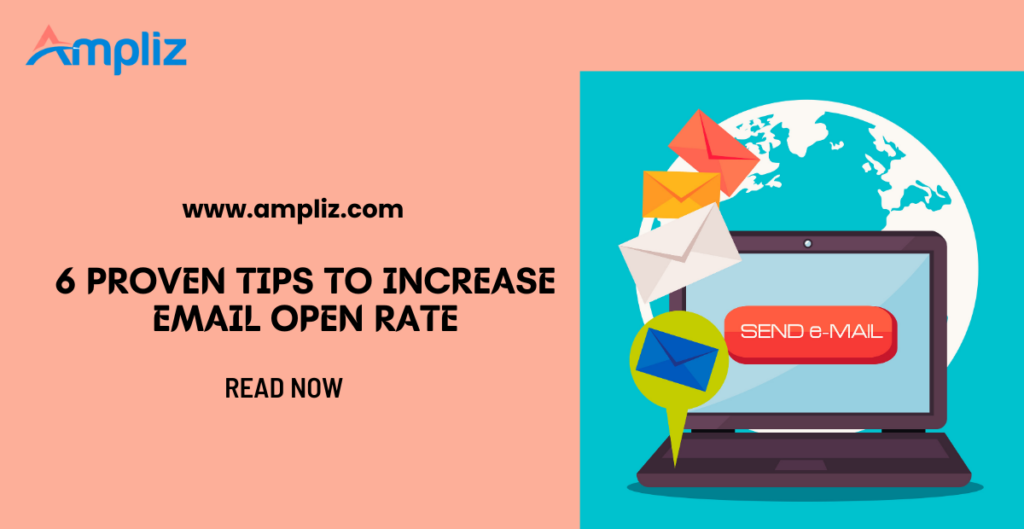How to Increase Email Open Rate?
Every marketers have the question in their mind how to increase email open rates?
Let me ask you a question. When you open your mailbox, what urges you to open any email?
You might say
Recipents’ name(known person/brand)
Interesting email subject lines to increase open rate
Your previous experience with the mail of the senders
And so on.
But still, 75% of people focus only on the subject lines to increase email open rate. And when it doesn’t work, they assume, nowadays people don’t read emails.
But along with the subject line, you need to take care of other factors too that might be responsible for a lower email open rate.
For example, your email must be segmented and targeted, it should be mobile optimized, the content must be relevant, and so on.
Curious how you can do all these? This blog is written just for that.
In this guide, we will delve into proven strategies and provide real-life examples to help you increase email open rates.
Let’s get started.
6 Effective ways to Increase Email Open Rate
There are 6 important parameters that you should Keep in mind while sending emails to your audience.
Let’s see which are those proven ways of improving email open rates.
1. Craft Irresistible Subject Lines
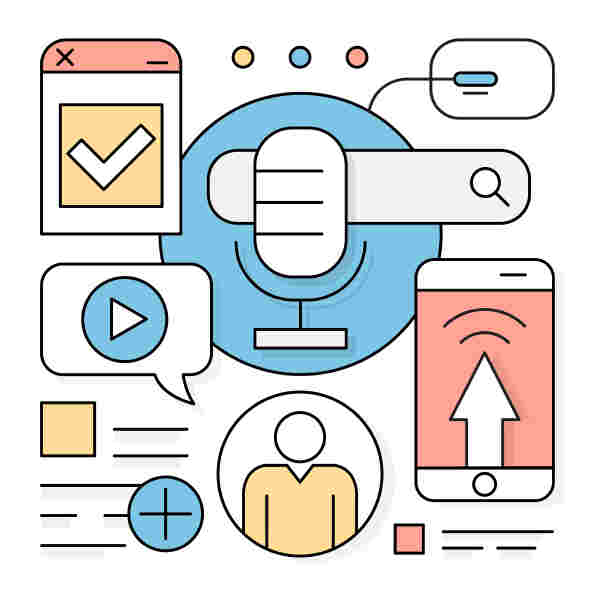
Crafting irresistible email subject lines is crucial for achieving higher email open rates.
Studies show that the average person receives around 120 emails per day, making it essential to grab their attention right from their inbox.
A compelling email subject line entices recipients to click on your email and discover what’s inside, leading to increased engagement and conversions.
Let’s delve into why email subject line is so important to get a high email open rate:
1. Grab Attention
Irresistible subject lines immediately capture the reader’s attention among a sea of other emails in their inbox. For instance, instead of saying “New Product Launch,” try “Don’t Miss Out on Our Revolutionary New Product!”
2. Create Curiosity
Piquing curiosity can be an effective way to make people want to know more about your email content.
An example could be “Unlock Your Secret Discount Code Inside!” This encourages recipients to open the message and discover what awaits them.
3. Personalization
Customizing subject lines with recipient names or relevant details adds a personal touch that resonates with individuals better than generic ones do.
For instance, if you’re offering a discount on dog food, using something like “Max will wag his tail for this exclusive offer!” creates a sense of personal connection.
4. Urgency & Scarcity
Creating urgency by incorporating limited-time offers or exclusive deals compels readers to act quickly rather than postponing opening your email until later when they might forget about it otherwise!
An example could be “Only 24 hours left! Grab these Black Friday Deals before they disappear!”
5. Highlight Benefits & Solutions
Communicate how your email solves problems or benefits recipients’ lives within the subject line itself. Instead of simply saying “10% Off,” go for something like “Say goodbye to high energy bills – Enjoy 10% off our efficient home appliances!”
6. Use Numbers & Lists
Numbers attract attention as they indicate specific information within emails themselves; including them in subject lines can increase open rates. For example, “5 Proven Strategies to Boost Your Sales Overnight” is more captivating than a generic statement.
7. Personal Achievements
Acknowledging recipients’ accomplishments or milestones can foster positive feelings and engagement with your email. An example could be “Congratulations on Graduating! Here’s something special for you.”
Remember that being concise while crafting these subject lines is crucial; aim for 30-50 characters to enhance readability on different devices and ensure the entire line appears in preview windows.
2. Segment and Target Your Audience
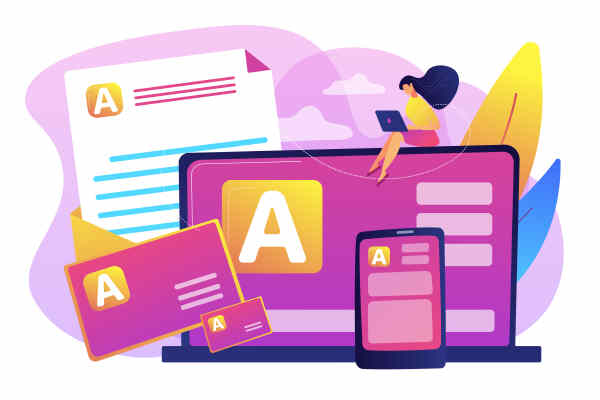
Segmenting and targeting your audience is crucial for achieving a higher email open rate. By tailoring your messages to specific groups within your overall subscriber base, you can create more personalized and relevant content that resonates with individual recipients.
This approach fosters stronger connections, drives engagement, and ultimately boosts open rates. Let’s explore the importance of segmentation and targeting through examples: Let’s explore the types of segmentation and targeting through examples:
1. Demographic Segmentation
Imagine you are an e-commerce company selling clothing for various age groups. Instead of sending the same generic email to all subscribers, segmenting by age allows you to craft tailored messages for each demographic group – teenagers, young adults, middle-aged individuals, or seniors.
With this strategy in place, teenagers might receive emails about trendy outfits while middle-aged customers could receive offers on classic attire they prefer.
2. Geographic Segmentation
Suppose you operate a travel agency offering vacation packages worldwide. Segmenting by location enables you to send targeted emails based on geography-specific preferences or seasonal factors affecting different areas at particular times of the year.
For instance, if winter approaches in North America but summer starts in Australia simultaneously, segmenting these regions allows you to promote appropriate holiday destinations accordingly.
3. Behavior-based Segmentation
Consider running an online bookstore with diverse genres available for readers of all interests and reading levels.
By analyzing customer behavior (such as purchase history or browsing patterns), you can target specific segments effectively.
For example, if a customer frequently buys mystery novels from a particular author or genre-related merchandise like bookmarks or tote bags – it’s reasonable to send them personalized recommendations aligned with their preferences.
4. Engagement-based Segmentation
Let’s say you manage a software-as-a-service (SaaS) company providing project management tools suitable for both small startups and large enterprises alike.
Segmentation based on user activity level helps optimize communication efforts towards enhancing engagement rates among inactive users versus active power-users who enjoy exploring advanced features regularly.
For less-engaged users, you might send emails highlighting new functionalities or offering exclusive discounts to re-engage them. Whereas for highly-engaged users, you could focus on showcasing advanced features and providing tips to maximize their productivity.
3. Optimize Preheader Texts
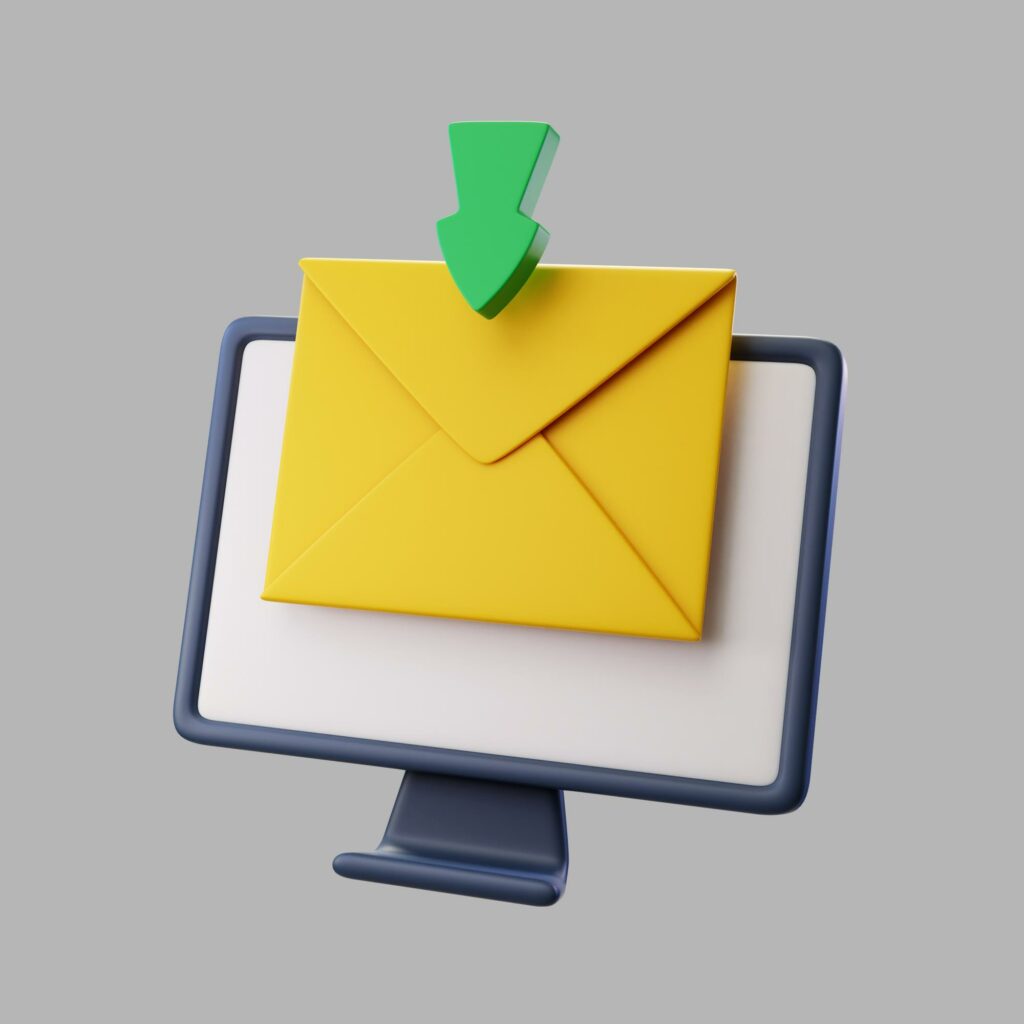
The pre-header text plays a crucial role in determining the success of your email campaign by significantly impacting the open rate.
It acts as a teaser that appears right after the subject line, providing recipients with a glimpse into the content of your email and enticing them to click open.
Here are some reasons why pre-header text is important and examples showcasing its effectiveness:
1. Grab attention
A well-crafted pre-header instantly captures attention amid crowded inboxes, motivating users to prioritize opening your email over others. For instance:
Subject Line: “Exclusive Sale Starts Now!”
Pre-Header Text: “Get up to 50% off on all products today!”
2. Provide additional information
Pre-header text allows you to expand on or complement what’s conveyed in the subject line, giving subscribers more context about what they’ll find inside. For example:
Subject Line: “New Blog Post Alert”
Pre-Header Text: “Learn effective tips for boosting website traffic.”
3. Create urgency or curiosity
By utilizing persuasive language and triggering emotions like FOMO (fear of missing out) or curiosity, you can encourage recipients to take immediate action.
Subject Line: “Limited Time Offer Ends Soon!”
Pre-Header Text: “Don’t miss out on huge savings; shop now!”
4. Personalization & segmentation opportunities
Utilizing dynamic tags based on subscriber data enables customized pre-header text tailored specifically for each recipient group.
Subject Line (For Males): “Your Style Upgrade Is Here!”
Pre-Header Text (For Males): “Discover trendy outfits curated just for you.”
4. A/B Testing for Continuous Improvement
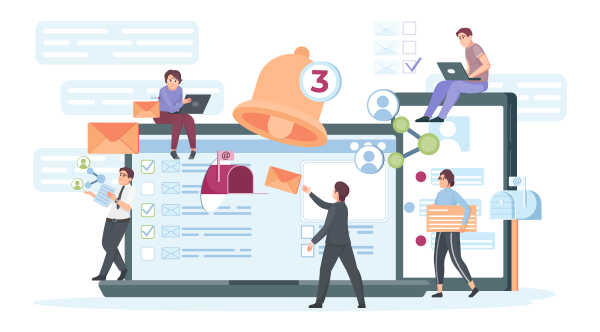
A/B testing is incredibly important for achieving higher email open rates. It allows you to experiment with different variables and determine which elements resonate best with your audience, leading to more effective email campaigns.
Here are a few examples showcasing the significance of A/B testing in improving email open rates:
1. Subject Line Testing
Crafting an engaging email subject lines to increase open rate is crucial as it directly impacts whether recipients open your emails or not. By conducting A/B tests on different subject lines, you can compare their effectiveness and identify what works best for your target audience.
For instance, let’s say you’re sending out a promotional email about a new product release. In one variant, you use a straightforward subject line simply stating “Introducing our latest product.”
In another variant, you opt for a more intriguing approach with the subject line “Unleash the power of our revolutionary new product!” Through A/B testing, you may discover that the second option generates significantly higher open rates due to its curiosity-inducing nature.
2. Call-to-Action Placement
Strategically placing call-to-action (CTA) buttons within your emails greatly influences click-through rates (CTR). Conducting A/B tests enables you to optimize CTA placement based on user behavior analysis.
Suppose you want users to sign up for a weekly newsletter subscription through an embedded CTA button. One variant positions the CTA at the end of the email, while another places it midway through the content.
A/B testing can reveal whether the position affects open rates or if one placement yields more conversions than the other.
5. Nurture Engaging Content
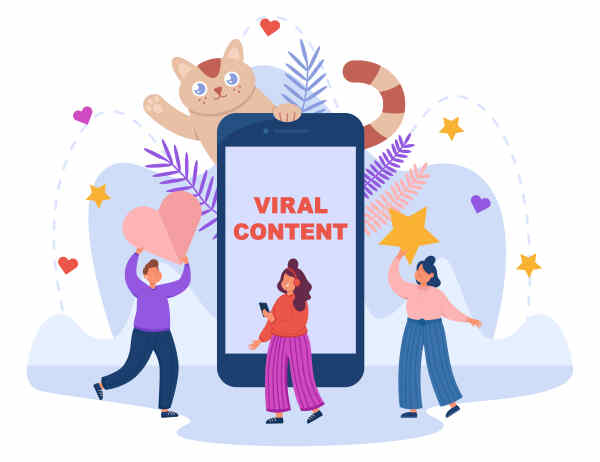
Nurturing engaging prospects is crucial for achieving higher email open rates. By developing a strong connection with your audience and providing them with valuable content, you can increase the chances of recipients opening your emails and engaging with your brand.
Here are some examples to illustrate the importance of nurturing prospects:
1. Personalization
Tailoring emails based on individual preferences or past interactions significantly increase email open rates and engagement. For instance, if a prospect showed interest in a specific product category, sending personalized recommendations related to their preferences would catch their attention and motivate them to open the email.
2. Segmentation
Dividing your subscriber list into segments allows you to create targeted campaigns that resonate better with each group’s interests.
For example, if you operate an e-commerce store selling clothing for various age groups, sending different promotions or style tips tailored specifically for teenagers versus older adults will yield higher open rates as it caters directly to their needs.
3. Drip Campaigns
Implementing drip campaigns enables you to nurture prospects gradually over time by delivering consistent value through a series of automated emails triggered by specific actions or time intervals.
This approach encourages engagement as prospects receive relevant content at regular intervals; an example could be an educational course delivered via email where subscribers receive one lesson per week.
6. Optimize Mobile Responsiveness
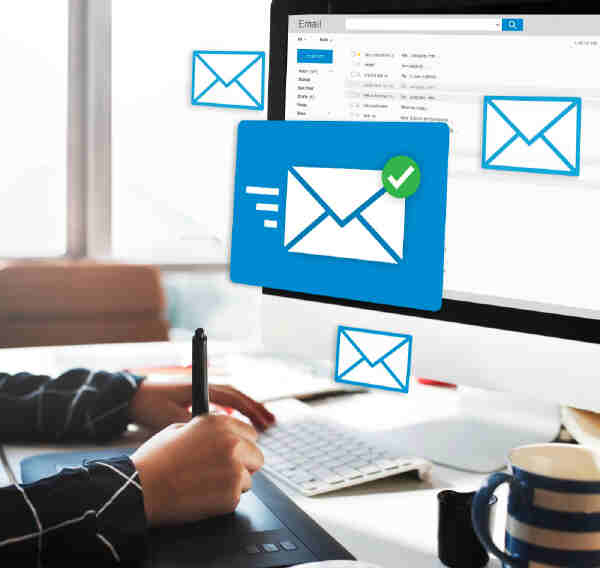
Optimizing emails for mobile responsiveness is absolutely crucial in today’s digital landscape, as it can significantly impact your email open rates and overall engagement levels.
With the ever-increasing use of smartphones and tablets, more people now access their emails on mobile devices than ever before. To ensure your content reaches a wider audience and captures their attention effectively, optimizing for mobile responsiveness is paramount.
1. Enhanced User Experience
Mobile optimization improves the user experience by ensuring that your email renders well across different screen sizes and resolutions. A visually pleasing layout with easy-to-read fonts, properly sized images, and clear CTAs will entice recipients to engage further with your email.
Example: Imagine receiving an email from an online retailer showcasing new product arrivals but struggling to read the text or navigate through small images due to poor mobile optimization. Frustrating experiences like this lead users to delete such emails without exploring further.
2. Increased Accessibility
By optimizing emails for mobile responsiveness, you make them accessible to a broader range of individuals who primarily use smartphones or tablets for email consumption—expanding your potential reach exponentially.
Example: Let’s say you run a nonprofit organization aiming to raise awareness about environmental issues. Sending out an optimized newsletter with captivating visuals highlighting recent projects directly contributes towards higher open rates among environmentally conscious individuals who predominantly access their emails through mobile devices while on the go.
3. Improved Deliverability & Inbox Placement
Email service providers prioritize responsive designs when determining whether messages should land in primary inboxes rather than spam folders or promotional tabs. Optimized emails are recognized as reputable communications worthy of being delivered right into users’ main inbox sections.
Example: Suppose you manage marketing campaigns for a software company launching a new product update via email newsletters sent out weekly updates featuring valuable insights alongside interactive elements optimized specifically for various screen sizes—from desktops down to smartphones—ensuring these newsletters consistently land in primary inbox folders instead of getting lost within cluttered promotions tabs.
Conclusion
By implementing these strategies alongside continuous testing and optimization of your email marketing efforts you’ll be well-equipped to witness a significant rise in your email open rates.
Remember compelling subject lines combined with tailored content can unlock the gateway to meaningful customer engagement!

